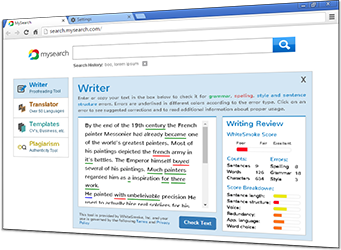Using Commas Correctly
The comma is a punctuation mark, mainly used to separate phrases within the same sentence. Commas can make written sentences easier to read, because they allow for slight pauses between ideas.
Commas can drastically change the meaning of a sentence. Take a look at the following examples:
- Mr. Smith said Dave should be arrested.
- Mr. Smith, said Dave, should be arrested.
In the first example, Mr. Smith is saying that Dave should be arrested. In the second example, Dave is saying that Mr. Smith should be arrested. The only difference between the two sentences is commas.
Just learn a few basic rules and you will be able to use commas effectively and correctly.
Place a Comma After Introductory Words and Phrases
The comma separates the introduction from the rest of the sentence.
- Eventually, we will find a cure.
- For my first trick, I will pull a rabbit out of a hat.
Use Commas to Set Off Clauses
Use commas to separate a non-essential phrase or clause from the rest of the sentence. A clause is non-essential if it can be removed without changing the meaning of the sentence or making the sentence incomplete.
- We will, eventually, find a cure.
- Kurosawa, the famous filmmaker, was the guest of honour.
Remember, if a clause is essential to the meaning of the sentence, it does not need commas.
- I saw a man walking in the street. The man, who wore brown shoes, went into a bookstore. (The fact that he wore brown shoes is not important to the sentence. It is just an extra bit of information.)
- I saw two men walking in the street. The man who wore brown shoes went into a bookstore. (The brown shoes are now essential to the sentence. The brown shoes tell us which man went into the bookstore.)
Place a Comma After a Subordinate Clause
A subordinate clause at the beginning of the sentence should be followed by a comma. If the subordinate clause is at the end of the sentence, a comma is not required.
- Because it is raining, we will have to stay home.
- We will have to stay home because it is raining.
There are many more rules for comma use, but the rules above will keep you from making the most common comma errors.
Commas and Introductory Phrases - The Rules
Inserting a comma after an introductory phrase is an excellent way to increase the clarity of a sentence. It is useful sometimes to imagine saying the sentence out loud, and imagine if a pause is needed after the first phrase.
Introductory phrases can include:
- adverbial phrases - Usually, Luckily, Interestingly, Apparently, etc.
- participial phrases - Having already finished his dinner; While sleeping; Receiving his instructions, etc.
- prepositional phrases - On the other hand, At first, Since last Friday
A comma is not needed if the introductory phrase is immediately followed by the verb it modifies.
Out of the trees flew a flock of birds; Walking directly toward her was her boss.



